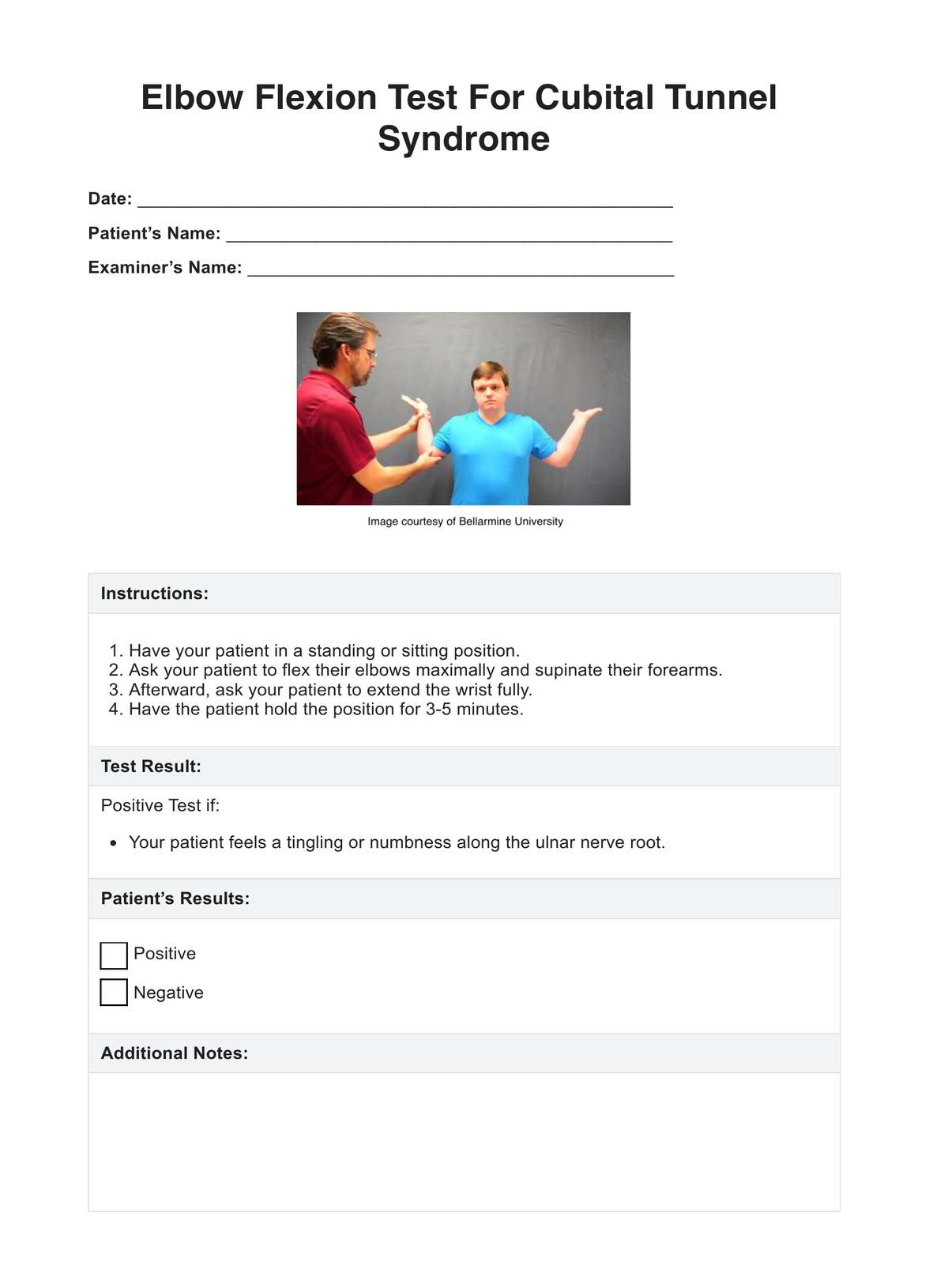The one who developed Cubital Tunnel Syndrome Test or better known as the Elbow Flexion Test, is Buehler, M.J.

Cubital Tunnel Syndrome Test
Use our elbow flexion test template to test for cubital tunnel syndrome in a patient. Click here for more information on the disorder, test, and more.
Use Template
Cubital Tunnel Syndrome Test Template
Commonly asked questions
One performs the Cubital Tunnel Syndrome test by simply following the instructions on the template. For a step-by-step on obtaining and using our template, refer to the “How Does it Work?” section above.
Instead of measuring, the cubital tunnel syndrome or elbow flexion test checks if the patient’s ulnar nerve is entrapped.
EHR and practice management software
Get started for free
*No credit card required
Free
$0/usd
Unlimited clients
Telehealth
1GB of storage
Client portal text
Automated billing and online payments











